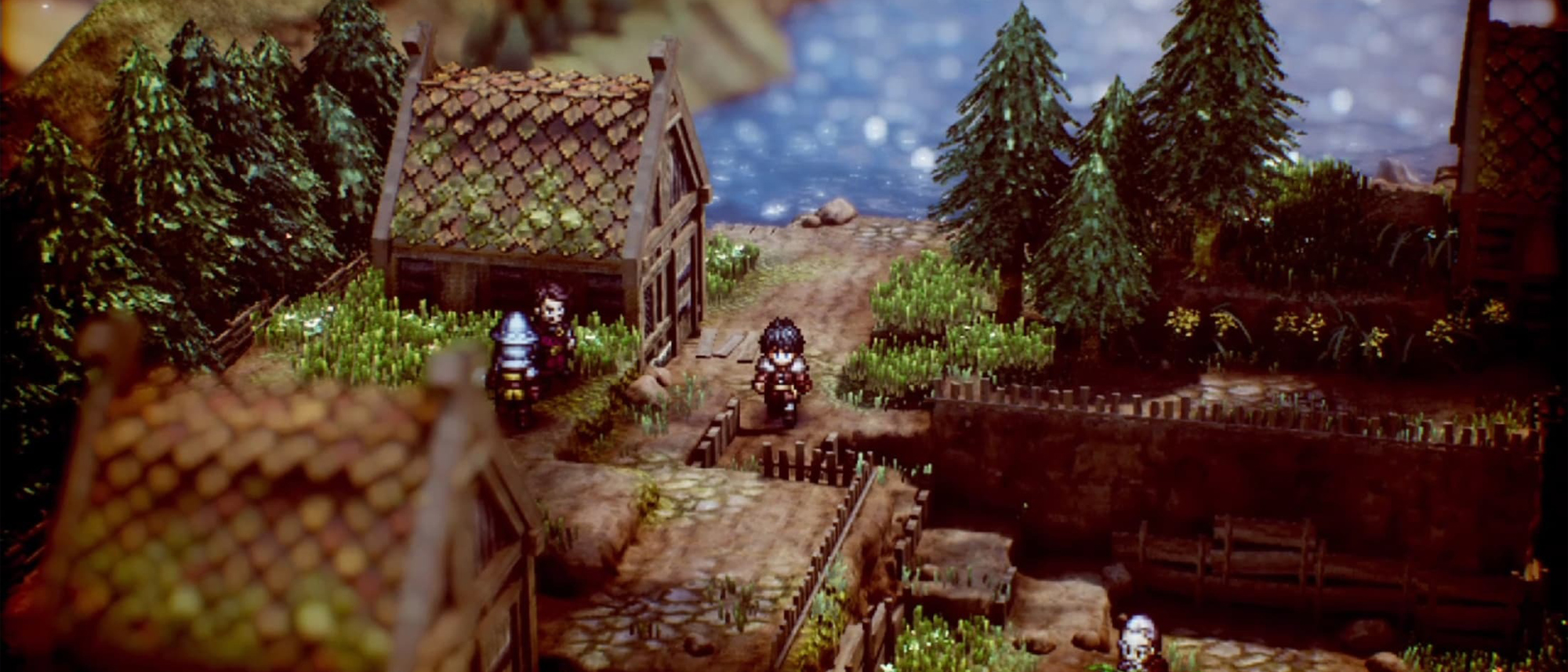Tom's Guide Verdict
Triangle Strategy tells a compelling story that connects with the tough decisions world leaders have made throughout history and today—but even with this strong narrative and well-designed gameplay, the long cutscenes and frustrating UI make the game less than perfect.
Pros
- +
Compelling story
- +
Sociopolitically relevant
- +
Impressive tactical gameplay
Cons
- -
Long, boring cutscenes
- -
Not enough battles
- -
Annoying UI
Why you can trust Tom's Guide
Platforms: Nintendo Switch
Price: $60
Release Date: March 4, 2022
Genre: RPG
Triangle Strategy is a classic strategy game in every sense of the genre—a winding story filled with romance and backstabbing, a fantastical war-torn society, and plenty of battles to undergo. While the game excels in the tactical gameplay and visuals, the UI is irritating and the cutscenes are too long and predictable to enjoy.
Read on for our full Triangle Strategy review.
Triangle Strategy review: Story
Triangle Strategy’s story is a classic medieval-ish fantasy tale featuring the three kingdoms of Norzelia, each of which has sole control over one important resource. You play as Lord Serenoa Wolffort of Glenbrook, the nation of trade. At the beginning of the story, Lord Serenoa meets his arranged wife-to-be, a royal family member of the Grand Duchy of Aesfrost and a Rosellan—the pink-haired Aesfrosti race that’s discriminated against across Norzelia.
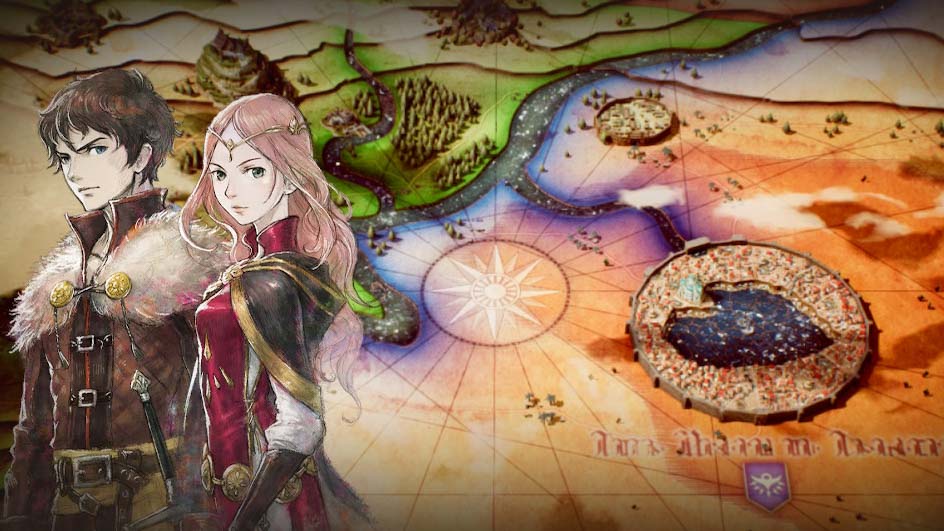
As the first few chapters unfold and you travel around Norzelia, the game paints a complicated picture of Norzelia’s politics that isn’t so hard to imagine. The seemingly perfect kingdom of Hyzante maintains its prosperity by enslaving Rosellans, and the white-haired royalty at the top of Aesfrost’s monarchy are plotting against even Rosellans they’re related to.
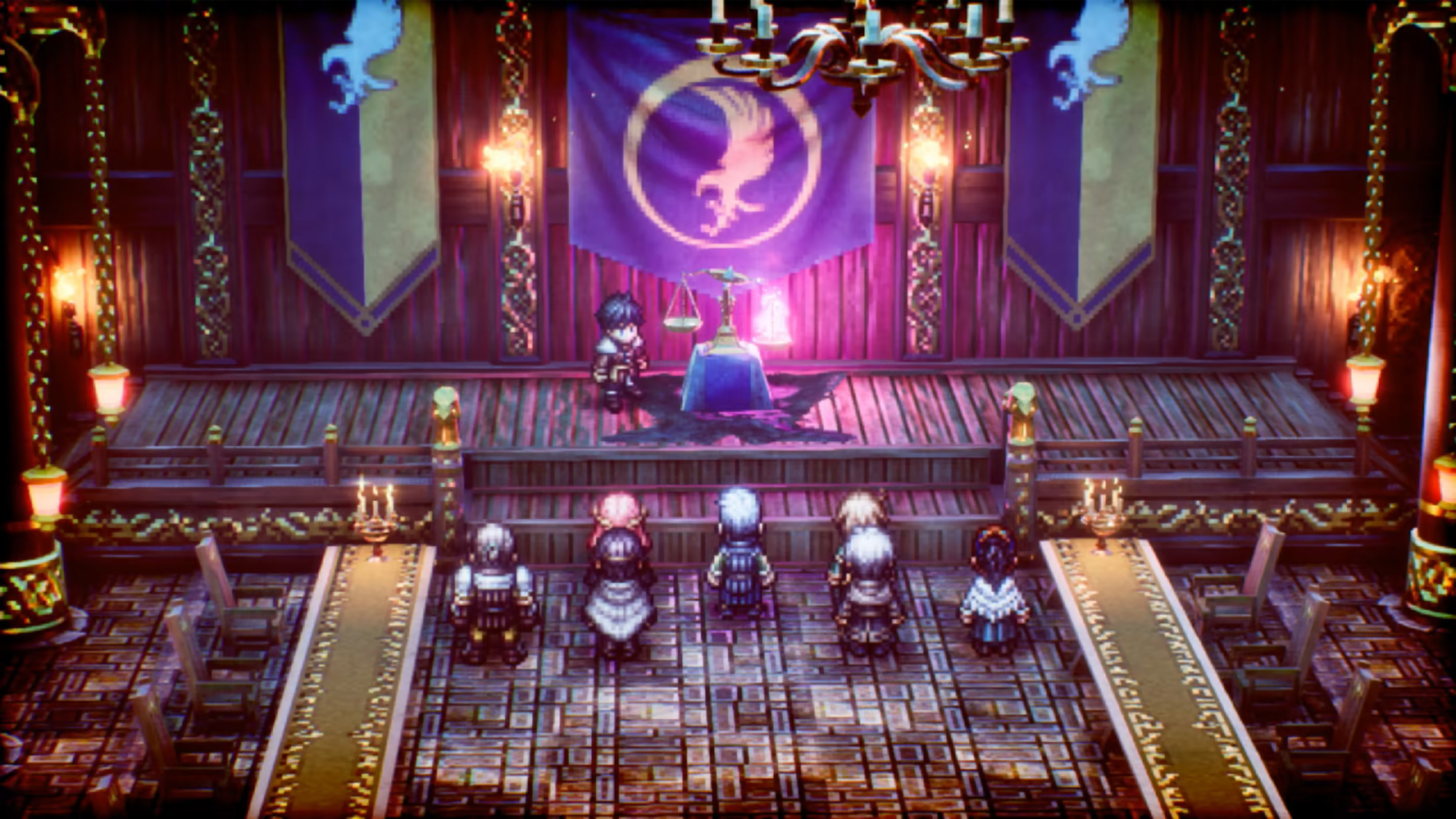
There’s plenty of backstabbing, romance, righteousness and long battles to make the plot of Triangle Strategy a compelling and believable fantasy tale—but it doesn’t push the envelope much. That’s fine in most cases, but it’s very similar to historical fantasy stories we’ve all played, read, and watched over the years. This predictable narrative is made even less exciting by the painfully long cutscenes and storyline sections. Luckily they’re easily skippable, if you don’t care about story at all.
Triangle Strategy review: Tactical Gameplay & Exploration Periods
The tactical gameplay during battles is hands down the best part of this game. The battles are long, but not boring, and the 2D-3D battlefield is a blast to play on. It might take a few turns to get used to effectively moving the camera around the battlefield, but once you get the hang of it, it’s a breeze to do exactly what you want in battle. There are also several difficulty levels available, and you can change anytime, so you can play battles over at different levels or stick with the pace you enjoy most.
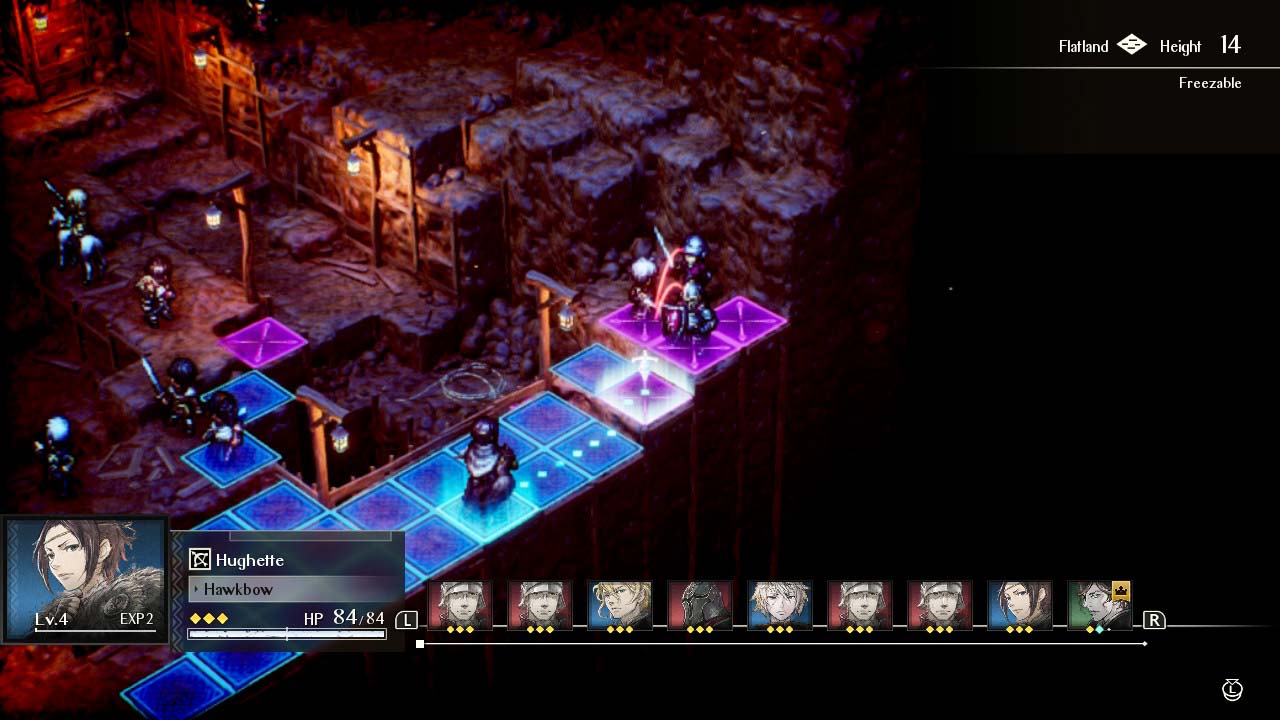
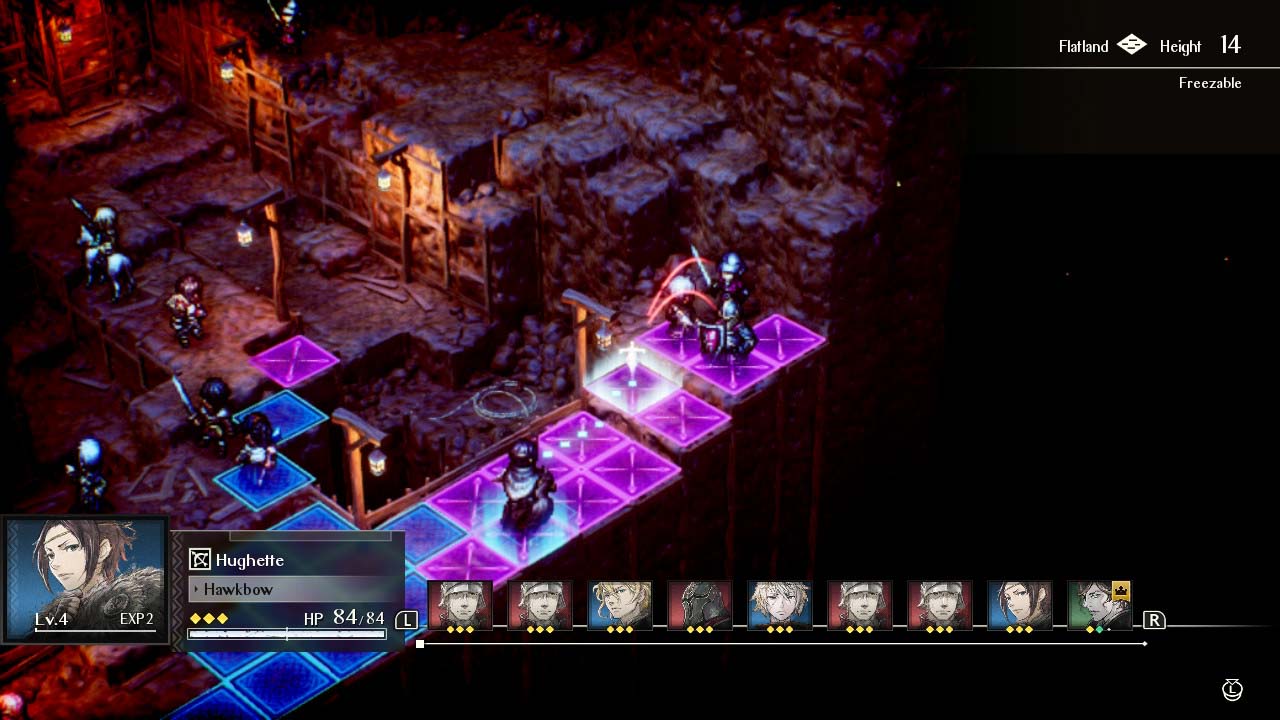
The Exploration Periods are another fun part of Triangle Strategy. Between certain battles or cutscenes, you have the opportunity to walk around the area you’re in, gather items hidden around the area, and talk with your compatriots.
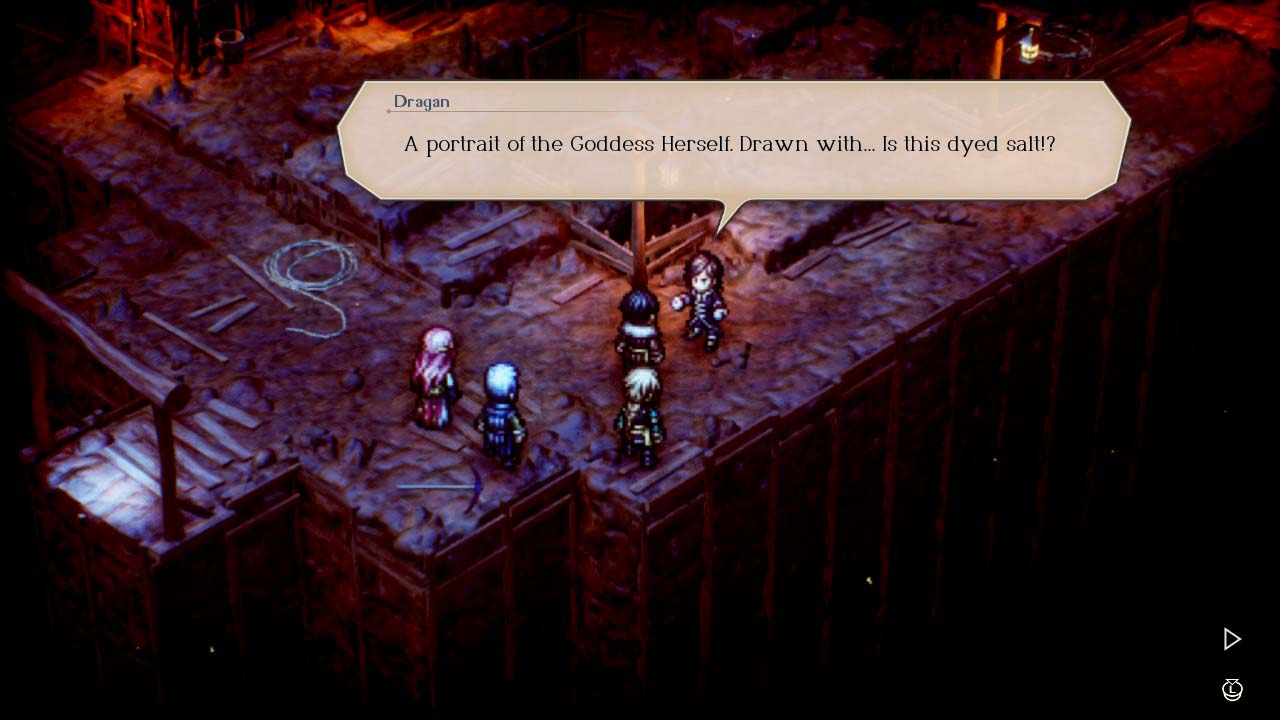
Some of these conversations give you the opportunity to strengthen your Convictions—the decision-making mechanism that shapes the narrative of your game—by giving you answers that lean toward Liberty, Utility, or Morality.
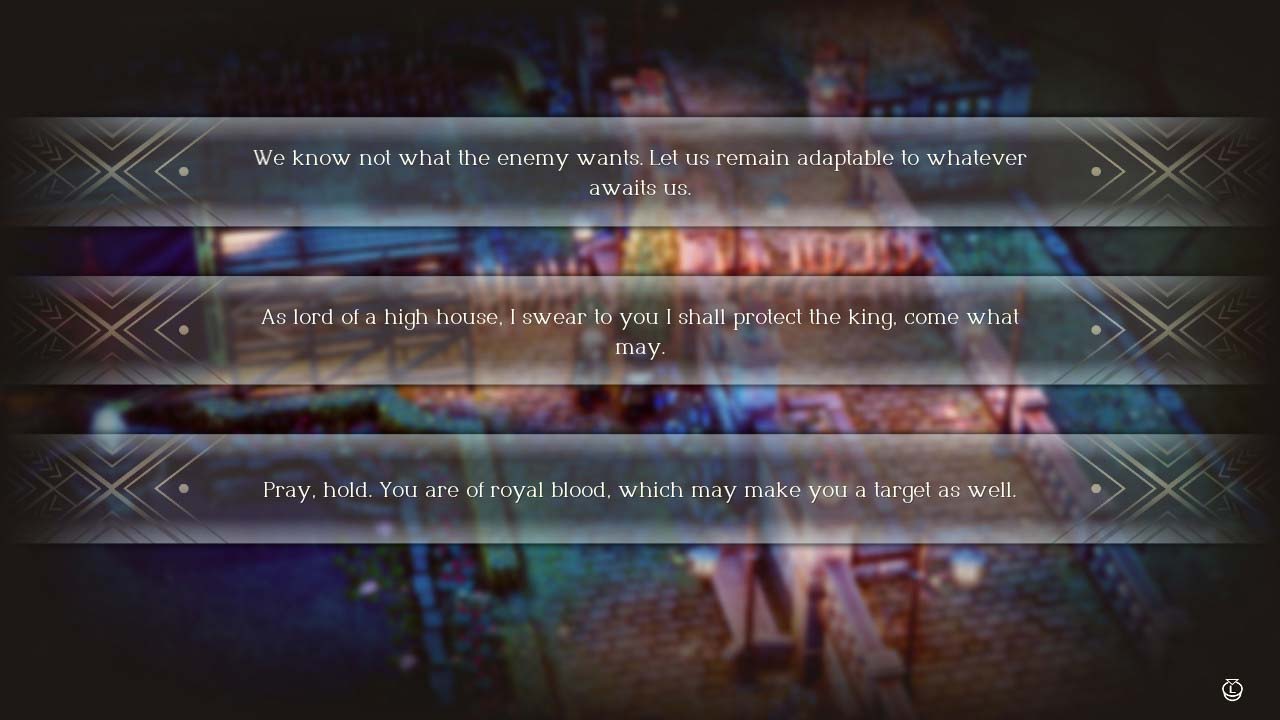
These decisions ultimately change the path of your game, with four possible outcomes at the end. This mechanism is fun, but it’s sometimes confusing whether there’s a “right” answer or not.
Triangle Strategy review: User Interface & Artwork
Unfortunately, the user interface of Triangle Strategy is not great. The button mapping is odd, the pointer sensitivity is too high, and the layout of menus is unintuitive. This is less frustrating of a strategy game, where time isn’t of the essence as much as a first-person RPG, but it’s ultimately an annoyance that makes me not want to pick up the game when I know I’m between battles.
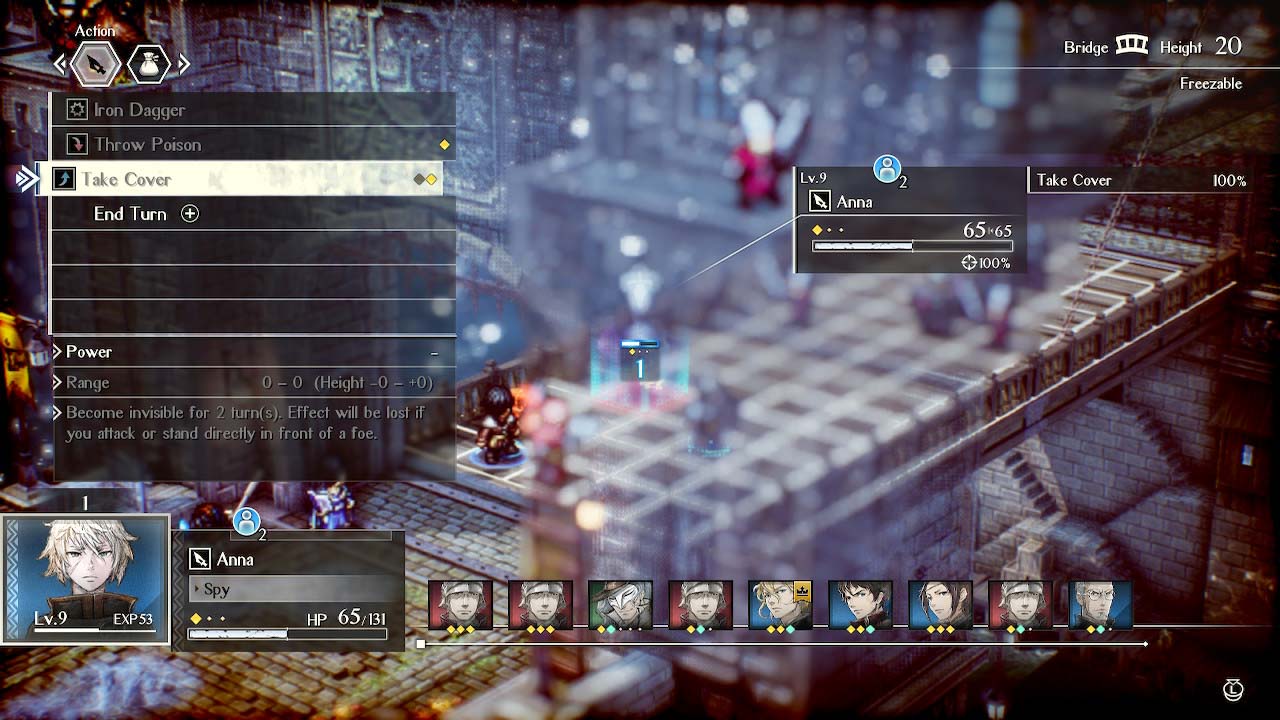
All of that said, the artwork in the menus and maps is absolutely beautiful. Throughout the game, the background artwork as well as the 8-bit characters are all really thoughtfully done, and make it easy to imagine the world of Norzelia before you.
Triangle Strategy review: Verdict
Triangle Strategy is an excellent strategy game, especially for the Nintendo Switch, which doesn’t have very many full-length games in this genre. While it succeeds in delivering beautiful, illustrative artwork, intuitive battle gameplay, and tough decisions to make throughout the game, the painfully long cutscenes at the beginning and predictable storyline make Triangle Strategy less enjoyable than it could be. The interface could use some work, too, although the tactical gameplay during battles is some of the best that I’ve ever played.
